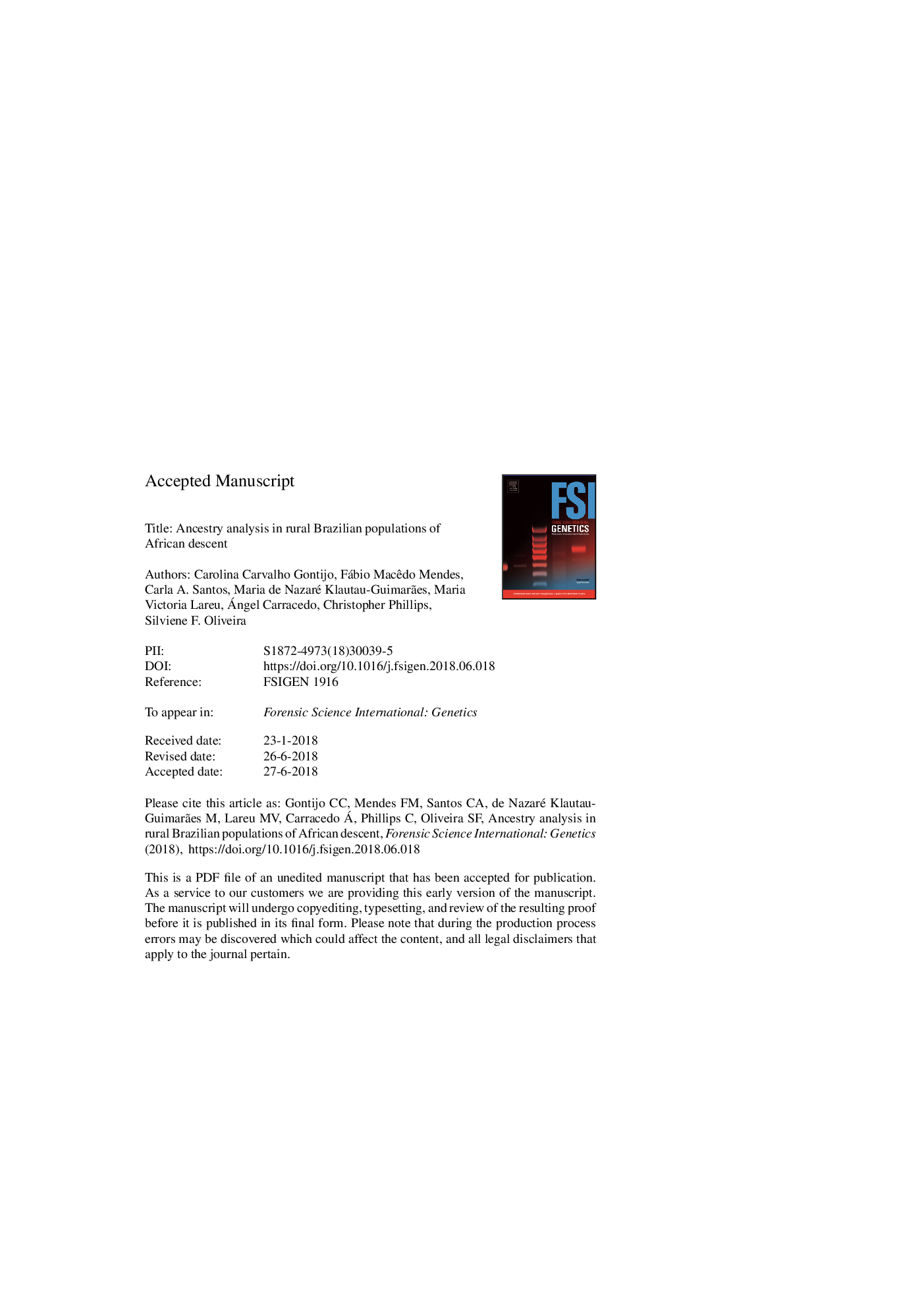| کد مقاله | کد نشریه | سال انتشار | مقاله انگلیسی | نسخه تمام متن |
|---|---|---|---|---|
| 6553204 | 1422142 | 2018 | 20 صفحه PDF | دانلود رایگان |
عنوان انگلیسی مقاله ISI
Ancestry analysis in rural Brazilian populations of African descent
ترجمه فارسی عنوان
تجزیه و تحلیل نژاد در جمعیت روستایی برزیل تبار آفریقایی
دانلود مقاله + سفارش ترجمه
دانلود مقاله ISI انگلیسی
رایگان برای ایرانیان
کلمات کلیدی
نژاد اندل، هدف، مخلوط، کویلمبو، برزیل،
موضوعات مرتبط
علوم زیستی و بیوفناوری
بیوشیمی، ژنتیک و زیست شناسی مولکولی
ژنتیک
چکیده انگلیسی
Rural communities comprise around 20% of Caribbean and South American populations, but are under-represented in autosomal marker databases. That deficiency is problematic for forensic genetics, as it relies on accurate descriptions of genetic variation and population structure. Brazilian populations were shaped by an intense, complex and heterogeneous process of admixture encompassing mainly Amerindians, Sub-Saharan Africans and Europeans. Quilombos are Brazilian populations with significant African descent that have remained genetically isolated to some extent from surrounding populations. In the reported study, we analyzed three rural Quilombo populations: Kalunga; Riacho de Sacutiaba e Sacutiaba; and Mocambo, along with a dataset from the HGDP-CEPH panel. Aiming to contribute to representative genetic databases of forensic interest, we analyse the three rural Quilombos populations and investigate how their genetic makeup relates to their history by analyzing an established forensic test, comprising 46 ancestry-informative (AIM) Indels. The panel was chosen for its high power in differentiating the main contributing populations of Brazil. Parental populations were selected from HGDP-CEPH data available at the forInDel allele frequency browser based on historic patterns applicable to the study populations and the amount of variability observed within and between continents. Our results show the main admixture components in the Quilombos are African and European. Those estimates are in accordance with previous analyses for both uniparental and autosomal markers. PCA, structure analysis and ancestry estimates indicate a correlation between the extent of isolation and the degree of admixture in the Quilombos: Kalunga is the most isolated population and accordingly has a higher African admixture component (67.3%). Sacutiaba is the smallest and most impacted by migration, with the highest European component (46.8%). Mocambo neighbors a Native American population and therefore has the highest Amerindian contribution (12.2%). Our results are consistent with the history and demography of Quilombos. The heterogeneity observed in these populations stresses the genetic diversity that Latin American and Caribbean rural populations can have and reiterates the need to describe them in greater detail.
ناشر
Database: Elsevier - ScienceDirect (ساینس دایرکت)
Journal: Forensic Science International: Genetics - Volume 36, September 2018, Pages 160-166
Journal: Forensic Science International: Genetics - Volume 36, September 2018, Pages 160-166
نویسندگان
Carolina Carvalho Gontijo, Fábio Macêdo Mendes, Carla A. Santos, Maria de Nazaré Klautau-Guimarães, Maria Victoria Lareu, Ángel Carracedo, Christopher Phillips, Silviene F. Oliveira,
